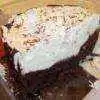-
Welcome to Celiac.com!
You have found your celiac tribe! Join us and ask questions in our forum, share your story, and connect with others.
-
Celiac.com Sponsor (A1):
Celiac.com Sponsor (A1-M):
-
Get Celiac.com Updates:Support Our Content
Konjac Flour
-
Get Celiac.com Updates:Support Celiac.com:
-
Celiac.com Sponsor (A17):
Celiac.com Sponsor (A17):
Celiac.com Sponsors (A17-M):
-
Recent Activity
-
- sc'Que? commented on Celiac.com Sponsor: Review's article in Product Reviews1
Bold Taste, No Alcohol & Crafted to Remove Gluten: Daura Non-Alc Beer Takes Alcohol-Free Beer to the Next Level
@Daura Damm: Can we get a gluten-free Imperial Oatmeal Stout, please? Please?!? -
- Mari replied to Jmartes71's topic in Related Issues & Disorders21
My only proof
I think, after reading this, that you areso traumatized by not being able yo understand what your medical advisors have been what medical conditions are that you would like to find a group of people who also feel traumatized who would agree with you and also support you. You are on a crusade much as the way the US Cabinet official, the Health Director of... -
- Jmartes71 replied to Jmartes71's topic in Related Issues & Disorders21
My only proof
Thus has got to STOP , medical bit believing us! I literally went through 31 years thinking it was just a food allergy as its downplayed by medical if THEY weren't the ones who diagnosed us! Im positive for HLA-DQ2 which is first celiac patient per Iran and Turkey. Here in the States especially in Cali its why do you feel that way? Why do you think your celiac... -
- knitty kitty replied to Scott Adams's topic in Post Diagnosis, Recovery & Treatment of Celiac Disease44
Supplements for those Diagnosed with Celiac Disease
@Scatterbrain, Thiamine Vitamin B1 and amino acid Taurine work together. Our bodies can make Taurine from meats consumed. Our bodies cannot make Thiamine and must consume thiamine from food. Meat is the best source of B vitamins like Thiamine. Vegetarians may not make sufficient taurine since they don't eat meat sources of taurine...





Recommended Posts
Archived
This topic is now archived and is closed to further replies.